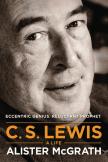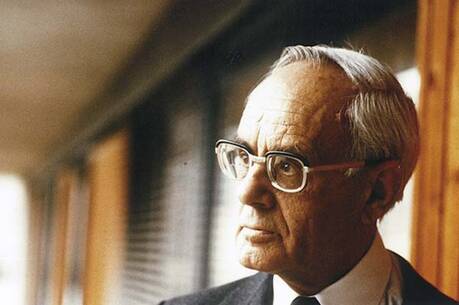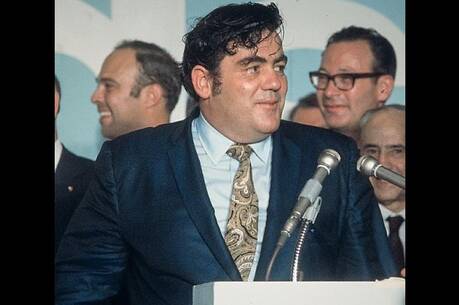Regarding Clive
That Alister McGrath, professor of theology, ministry and education at King’s College London, has concluded, among other things, that C. S. Lewis’s conversion took place a year later than other biographers have taken for granted probably interests only scholars and Lewis fans, but McGrath’s new biography refreshes in other ways.
Some biographers, admittedly friends of Lewis, have used an unctuous tone when writing of his life. McGrath makes a point of this:
Where other biographies refer to Lewis as “Jack” in their works, I have felt it right to call him “Lewis” throughout, mainly to emphasise my personal and critical distance from him. I believe that this is the Lewis whom he himself would wish future generations to know.
Why so? As Lewis emphasized through the 1930s, the important thing about authors is the texts that they write. What really matters is what those texts themselves say. Authors should not themselves be a “spectacle”; they are rather the “set of spectacles” through which we as readers see ourselves, the world, and the greater scheme of things of which we are a part.... Through this work, wherever possible, I have tried to engage with his writings, exploring what they say, and assessing their significance.
Of course, this is a matter of balance in a biography. Though McGrath does spend more time examining the texts themselves than other biographers have done, he nevertheless has to delve into details of Lewis’s personal life, some appealing, some not. Thus he does not gloss over Lewis’s youthful eager reading of the Marquis de Sade and what he called his own devotion to the whip, though it never appears to have gone further than fantasy.
And then there was the older woman, Mrs. Jane Moore, with whom Lewis lived most of his adult life. She was the mother of Lewis’s friend Paddy Moore, who was killed in the Great War. Many have said that Lewis and Mrs. Moore, long separated from her husband, whom she called “the Beast,” were never lovers, but the scholarly consensus seems to be now (and McGrath concurs) that they were.
Another woman with whom Lewis was intimate, Joy Davidman, a Jewish Brooklynite, set out, according to one of her sons, to seduce Lewis. McGrath convincingly shows that Davidman did contrive to marry Lewis but notes that it takes two to tango, that Davidman, as a former Communist, would have had trouble getting work in the United States during the McCarthy days, and that Lewis did fall in love with her and benefited from her as his muse for such works as Reflections on the Psalms, The Four Loves and his best and least well-received novel, Till We Have Faces.
McGrath also chronicles Lewis’s scholarly life at Magdalen College at Oxford and later Magdalene College at Cambridge. Lewis was not only an apologist for Christianity and writer of science fiction and children’s stories but also a well-respected if controversial literary scholar. As McGrath writes, “William Empson (1906-1984), a leading literary critic who had little time for Lewis’s views on Milton, nevertheless declared that ‘he was the best read man of his generation, one who read everything and remembered everything he read.’”
The only problems with this book are occasional awkward phrasings and repetitions, though for the most part the writing flows clearly. I also enjoyed the photographs distributed throughout the narrative, many of which I had never seen. But the paper on which the book is printed seems almost of newspaper quality, and do we really need a close-up photograph of Lewis’s face on the cover that shows his broken capillaries, upper lip stubble and a glimpse of discolored teeth?
Some Catholics have lamented that Lewis, an Anglican, never converted. I have always thought this was putting the cart before the horse, in that many of those evangelicals, myself included, who did eventually convert, partly because of Lewis’s writings, would never have read Lewis in the first place if he had been Catholic. This perhaps works both ways, as McGrath says that some Catholics of his acquaintance, discouraged by the clerical sexual abuse scandals, are turning to Lewis for a deeper faith irrespective of any clerical hierarchy. Lewis, an Ulster Protestant, imbibed anti-Catholicism as a child, though he rarely indulged his childhood prejudices. He even came to believe in purgatory and confessed his sins to a Cowley father regularly.
And it was his Catholic friend, J. R. R. Tolkien who, McGrath writes, “helped Lewis to realize that a ‘rational’ faith was not necessarily imaginatively and emotionally barren. When rightly understood, the Christian faith could integrate reason, longing, and imagination.” So perhaps it is time to stop worrying about why Lewis never became a Catholic and to just read his works for the knowledge and enjoyment they give us.
This article also appeared in print, under the headline “Regarding Clive,” in the July 1-8, 2013, issue.








